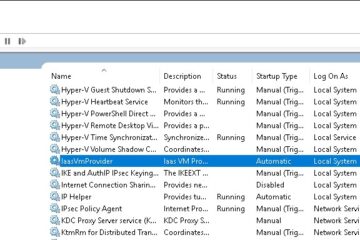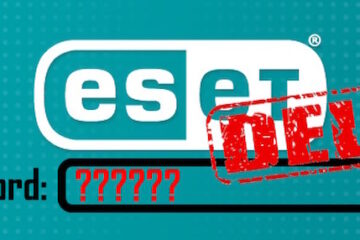*** DRAFT ***
This article will brief the key area’s of Windows Deployment Services (WDS) under Windows Server 2008. Note that the majority of these instructions will function equally as well under Server 2003 R1 or R2 but are not specifically intended for those platforms.
WDS was released with Service Pack 2 for Server 2003, as a replacement for Remote Install Services (RIS). RIS had a number of imaging restrictions (drive size, drive controller…) which were quite livable at the time but are no longer tolerable.
The primary difference between the 2003 and 2008 versions of WDS is that old RIS images were supported under 2003 WDS but they are not under 2008.
Ok… enough with the history, lets get on with it:
HOW TO INSTALL WINDOWS DEPLOYEMENT SERVICES:
- Launch SERVER MANAGER and click ADD ROLES (at the top right)
- Select WINDOWS DEPLOYMENT SERVICES (near or at the bottom of the list)
- Keep both role features selected (Deployment, Transport Server)and click NEXT
- At the section asking about DHCP port 67 and protocol 60, make sure you read the instructions on the screen.
- If you are installing WDS on a server with DHCP you need to make sure both options are selected.
- Click NEXT and agree with all of the defaults through the end of the wizard.
TROUBLESHOOTING:
 If after the install is complete you see ERROR ##### and you have confirmed that you can NOT start (manually or otherwise) the Windows Deployment Service (via SERVICES.MSC) then you most likely need to go to WDS, right click on the server name and select PROPERTIES, then select the DHCP tab and make sure that BOTH of the options (relating to port 60 and 67) are checked.
If after the install is complete you see ERROR ##### and you have confirmed that you can NOT start (manually or otherwise) the Windows Deployment Service (via SERVICES.MSC) then you most likely need to go to WDS, right click on the server name and select PROPERTIES, then select the DHCP tab and make sure that BOTH of the options (relating to port 60 and 67) are checked.
HOW TO ATTACH IMAGES TO YOUR WDS SERVER:
You will want a minimum of FOUR (yes, 4) images on your WDS server, fortunately this is easy to do:
A) BOOT IMAGE: This image is used after the machine PXE boots to the server and is used by WDS to run the WDS interface on the PC in question.
- Insert the your Windows Vista media in the servers DVD drive
- Launch WDS the server
- Right click on the BOOT IMAGES section and select ADD BOOT IMAGE
- Browse to your Vista DVD and select \SOURCES\BOOT.WIM
- Agree with the defaults to the end of the wizard
B) VISTA IMAGE: This image is used to install a base Vista image on lab machine you want to start you image off with
- Insert the your Windows Vista media in the servers DVD drive
- Launch WDS the server
- Right click on the INSTALL IMAGES section and select ADD INSTALL GROUP, and type MY_IMAGES
- Right click on the INSTALL IMAGES section and select ADD INSTALL IMAGE
- Browse to your Vista DVD and select \SOURCES\INSTALL.WIM
- Agree with the defaults to the end of the wizard
Note if you skip section 3, you will get a “There is no image group on the WDS server ‘192.168.x.x’. Please use WDS Management to create an image group” error when you try to capture an image in section D below.
C) CAPTURE IMAGE: This image is used AFTER you have imaged a lab machine with the base image created in section B and updated it (i.e. installed Office, service packs, drivers, default profiles…). You use this image to collect a SysPreped image of a PC (which is explained in greater detail further down this page). Capture images are simply boot images that launch the Image Capture Wizard.
- Launch WDS the server

- Right click on the image you created in section A and select CREATE CAPTURE IMAGE
- Name this CAPTUREIMAGE.WIM (or something like that)
- Choose a temporary location for this output and agree with the rest of the options in the wizard
- Right click the Boot Image folder and select ADD BOOT IMAGE
- Browse to the WIM file you just created in step 4 and agree with the rest of the options in the wizard
- After this is complete you can delete the temporary .WIM file created in step 4.
D) CORPORATE IMAGE: This image is used to push a finalized image to a PC. (i.e. the point of this whole exercise)
 Sysprep a Vista PC ensuring that OOB OUT OF BOX EXPERIENCE, GENERALIZE, and SHUTDOWN have been selected.
Sysprep a Vista PC ensuring that OOB OUT OF BOX EXPERIENCE, GENERALIZE, and SHUTDOWN have been selected.- After the machine shuts down, boot it up, and set it to boot from the network/PXE Boot/LAN boot.
 As requested on the PXE boot screen, select F12
As requested on the PXE boot screen, select F12- Select CAPTURE IMAGE and then NEXT on the Welcome screen
 On the WDS Capture Screen you need to select any local drive and file name
On the WDS Capture Screen you need to select any local drive and file name- Make sure the UPLOAD IMAGE TO WDS SERVER is selected
- Type in your WDS servers host name or IP address and wait. If your the machine becomes non-responsive here, your CAPTURE IMAGE does not have the network drivers for the card on the PC. If that is the case, reboot and just prior to entering the host name, do the following:
- find the drivers for your network card and put them on a memory stick or floppy disk and put it in the PC you are trying to image
- Start a command window by pressing Shift+F10.
- Change directory to the location of the network driver and use command drvload XXXX.inf where XXXX.inf is your network card driver. Yes, you can add a bunch of them if you are not certain which driver is which. You should see a ‘Successfully loaded driver’ message.
- Start the network with wpeutil InitializeNetwork . You will receive ‘Command completed successfully’.
- You should now be able to ping the WDS server.
- Alternately you could permanently add the drivers to your CAPTURE image following THIS process
- Select the a group in the drop down list and click next.
http://www.windows-noob.com/forums/index.php?showtopic=261
I am trying to capture an image off an coputer through WDS.
I followed the instructions in another post here:
1. Install the WDS Server role
2. Launch the WDS MMC (from the Administrative Tools Menu)
3. Right-click the server and choose ‘Configure Server’. Step through the wizard.
4. Choose to add images to the server (the check box on the finish page of the ‘Configure Server’ wizard). Point to the Longhorn Server DVD (or the contents of the DVD on a network share / folder).
And if you want to deploy XP images in .WIM format
5. Right-click the Windows PE image in the ‘boot’ folder and choose ‘Create Capture Image’. The output of this command is a customized version of Windows PE that will launch the WDS Image Capture utility instead of setup.exe.
6. Add the .WIM file created in step#5 back to the server by right-clicking on the ‘Boot’ node and choosing ‘Add Boot Image’.
7. Install XP onto a reference machine (client computer)
8. Install some apps / do some customizations
9. Run sysprep (available in deploy.cab from your XP SP2 media)
10. PXE boot the reference machine against the WDS server.
11. Select the WDS Image Capture Windows PE image from the boot menu.
12. Complete the wizard to capture the XP SP2 image and upload it to the WDS Server.
In addition I added the nic driver to the capture image usin imagex and peimg.
I boot on network, select the correct image. Starts the wizard and select partition to image.
But when I type server name, and selects Connect, I cannot connect to the server.
Get en timeout.
Tryed with servername, FQDN, and IP. Nothing works.
- The problem is the LAN driver missing in the WindowsPE boot image. You can add the driver in the booting image or you can load it later. So if you know you can’t connect to upload the image to WDS then download the LAN driver for your network card, put it on a floppy or USB. Start the image capture process. Before you connect to WDS server start a command window with Shift+F10. Ping the server IP. If times out or you get an error, load the driver with drvload *****.ini where *****.ini is the file on the floppy corresponding to your LAN driver. You can use USB as well to store driver files on but I didn’t try that. You should receive an ‘Successfully loaded driver’ message. Now you have to initialize the network card with the command ‘wpeutil InitializeNetwork’. You will receive a ‘Command completed successfully’. Now you should be able to ping the WDS server. You can continue the process of capturing the XP image as stated in other tutorials. I worked on the Virtual PC trying to test WDS. If you do so you need only use ‘Local Only’ adapter as network card. In my VirtualPc I captured a floppy image with network drivers on it. (you can create the image with winimage) I used this link http://www.network-drivers.com/drivers/22/22752.htm to download the driver for Intel 21145 network adapter emulated in the VirtualPc (unpack and use the NDIS50 folder to create the floppy image). Change to a: and type drvload NET21X4.INF. After the driver loads with the proper notice you have to initialize the network card with the command ‘wpeutil InitializeNetwork’. Now the ping to WDS server should receive replies. That’s it!
Lucian



2 Comments
driver Detective · March 5, 2013 at 9:30 am
Oh my goodness! Amazing article dude! Thanks, However I am going through troubles
with your RSS. I don’t know the reason why I cannot join it. Is there anybody having similar RSS problems? Anyone who knows the solution can you kindly respond? Thanks!!
Ian Matthews · March 17, 2013 at 9:47 am
Our RSS feed is http://www.urtech.ca/?feed=rss
What happens when you try to connect>